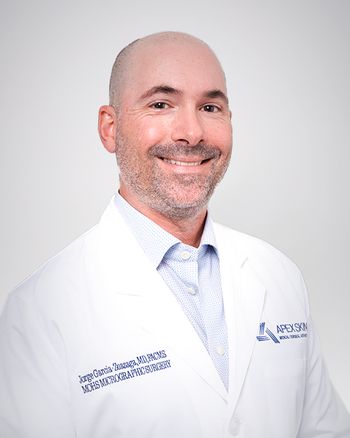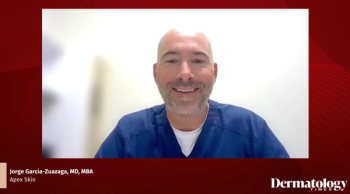
- Dermatology Times, April 2022 (Vol. 43. No. 4)
- Volume 43
- Issue 4
- Pages: 19
Qualified and Nonqualified Retirement Plans: Why Many Dermatologists Should Use Both... but Don’t
“With a traditional QRP [qualified retirement plan], a participant trades today’s tax rates on their contribution for the tax rates in the future, when they withdraw the money from the plan. If rates rise, the QRP might prove not to be a good deal at all.”
It is not surprising that data from national surveys show that the No. 1 financial objective for most US physicians is to achieve a financially secure retirement on their terms. OJM Group’s work with more than 1500 physicians across the country supports these findings.
What is surprising is the number of doctors, including dermatologists, who attempt to reach this goal using just 1 of the practice tools at their disposal: qualified retirement plans (QRPs). Many are completely unaware of another option: nonqualified plans (non-Q plans).
Understanding the structures of both types of plans is essential because the choice can have a significant impact on retirement.
Qualified Plan Basics
The term “qualified retirement” means that the plan meets the definition of a retirement plan under Department of Labor and Internal Revenue Service rules created under the Employee Retirement and Income Security Act of 1974. A QRP may be in the form of a defined benefit plan, profit sharing plan, money purchase plan, 401(k), or (common in hospitals) 403(b). Properly structured QRPs offer a variety of benefits: Contributions to a traditional QRP are fully deductible, and the funds grow tax deferred and (if nonowner employees participate) enjoy superior asset protection.
On the other hand, disadvantages of these plans include the following:
- Mandated maximum annual contributions for defined contribution plans
- Mandatory employee participation
- Potential liability for management of employee funds
- Controlled group and affiliated service group restrictions
- Penalties for withdrawal prior to age 59½
- Required distributions beginning at age 72
- Full ordinary income taxation of distributions
- Full ordinary income taxation and estate taxation of balances upon death (combined tax rates can be more than 70%)
In OJM Group’s experience, most dermatologists participate in traditional QRPs despite these disadvantages. The tax deduction is a strong, often irresistible lure. For many, however, the cost of contributions for employees, potential liability for mismanagement of employee funds, and ultimate tax costs on distributions may outweigh the current tax savings offered by QRPs. If not giving pause, these drawbacks at least suggest that it would make sense to investigate another type of plan (to hedge the QRP) as an additional savings vehicle.
This is especially true for those who believe that income tax rates, especially the higher marginal rates, will go up over the coming decades. With a traditional QRP, a participant trades today’s tax rates on their contribution for the tax rates in the future, when they withdraw the money from the plan. If rates rise, the QRP might prove not to be a good deal at all.
Although no one knows what the future will bring, it is a fact that tax rates were much higher for most of the second half of the 20th century than they are today. Conversely, the federal deficits are higher today than ever before because of the stimulus packages related to the COVID-19 pandemic. At some point, taxes will need to be collected to pay down these deficits.
Furthermore, most dermatologists will not see a drastic change in marginal tax rates during retirement. In fact, it appears that most physicians work and save until they have a “comfortable” retirement. Although every physician defines their retirement goal differently, it is rare that specialists such as dermatologists retire with income that puts them in a lower tax bracket.
In fact, their retirement income from passive investments, sale of assets, Social Security, and QRP distributions often puts them in one of the top marginal tax rates. For these reasons, many dermatologists should use retirement savings alternatives to hedge against retirement income from their QRPs.
Roths
One alternative is a Roth IRA or Roth component to a QRP. Taxes are paid up front on any contributions, but the Roth balance grows tax free and can be accessed tax free in retirement. Compared with the tax treatment of QRPs, the Roth’s tax-free access can be tremendously valuable.
Existing rules limit how much money can go into this type of vehicle. Further, tax bill provisions may curtail or eliminate many taxpayers’ ability to use a Roth. It is important to work with an experienced tax adviser when considering this option.
Nonqualified Plan Basics
Non-Q plans are not used by physicians nearly as much as by corporate executives. This is unfortunate, because they could be valuable retirement tools for many dermatologists. These plans are not subject to QRP rules, so they do not have to be offered to employees. Further, even for physician-owners, there is total flexibility. For example, one practice owner can contribute the maximum, the next partner could put in much less, and a third physician could opt out. These are the reasons large corporations use non-Q plans so often: They can choose which executives get to participate and at what levels.
The main drawback of non-Q plans is that contributions are generally not tax deductible. However, as with a Roth IRA, they can be structured for tax-free growth and tax-free access in retirement. For someone who would fund a Roth beyond current limitations, a non-Q plan could be an attractive option.
Consider the following attributes of a non-Q plan:
- Places very few limitations on contributions as opposed to QRPs
- Can be implemented in addition to a QRP, such as a 401(k) or profit-sharing plan
- Lets owners/partners vary how much/if they participate
- Does not require employee participation
- Generally produces no tax deduction on contributions, but funds can both grow and be accessed tax free
- Provides top asset protection in many states
Given all these attractive benefits, why do so few dermatologists use non-Q plans? In OJM Group’s experience, it is because advisers often do not bring them up to physicians as a planning option. Many certified public accountants are not well versed in non-Q plans, which create no immediate tax deduction so may not be on their radar. Further, the adviser who administers the practice’s QRP (the third-party administrator) is not typically needed in a non-Q plan, so it is rarely presented as an option.
Despite an adviser’s knowledge of non-Q plans, the underlying reason that these valuable retirement-planning tools often are not considered for medical practices is that few physicians think enough about long-term tax treatment and instead focus only on their tax liability for the current year.
Conclusion
Both QRPs and non-Q plans can play important roles in building a secure retirement. An experienced adviser can lay out each type’s upsides and downsides and help determine which plan will best fit a practice’s needs and goals.
Wealth Planning for the Modern Physician and Wealth Management Made Simple are available free in print or by e-book download by texting DERM to 844-418-1212.
Articles in this issue
over 3 years ago
Microneedling Misconceptionsover 3 years ago
2022: Meeting the Challenges of Advanced BCCover 3 years ago
Cost of Copies Prompts a Lawsuitover 3 years ago
Diverse Perspectives in Medical Aesthetics Matter More Than Everover 3 years ago
Cellular Grafting in Vitiligoover 3 years ago
Polish Skills to Treat Nail Disordersover 3 years ago
Identifying Diagnostic Bias in Skin of Colorover 3 years ago
Machine Learning to Identify Biomarkers in ADover 3 years ago
Effect of Joint Pain on Analgesic Use in Patients with Psoriasisover 3 years ago
Linking Psoriasis and Cardiometabolic DiseaseNewsletter
Like what you’re reading? Subscribe to Dermatology Times for weekly updates on therapies, innovations, and real-world practice tips.

















